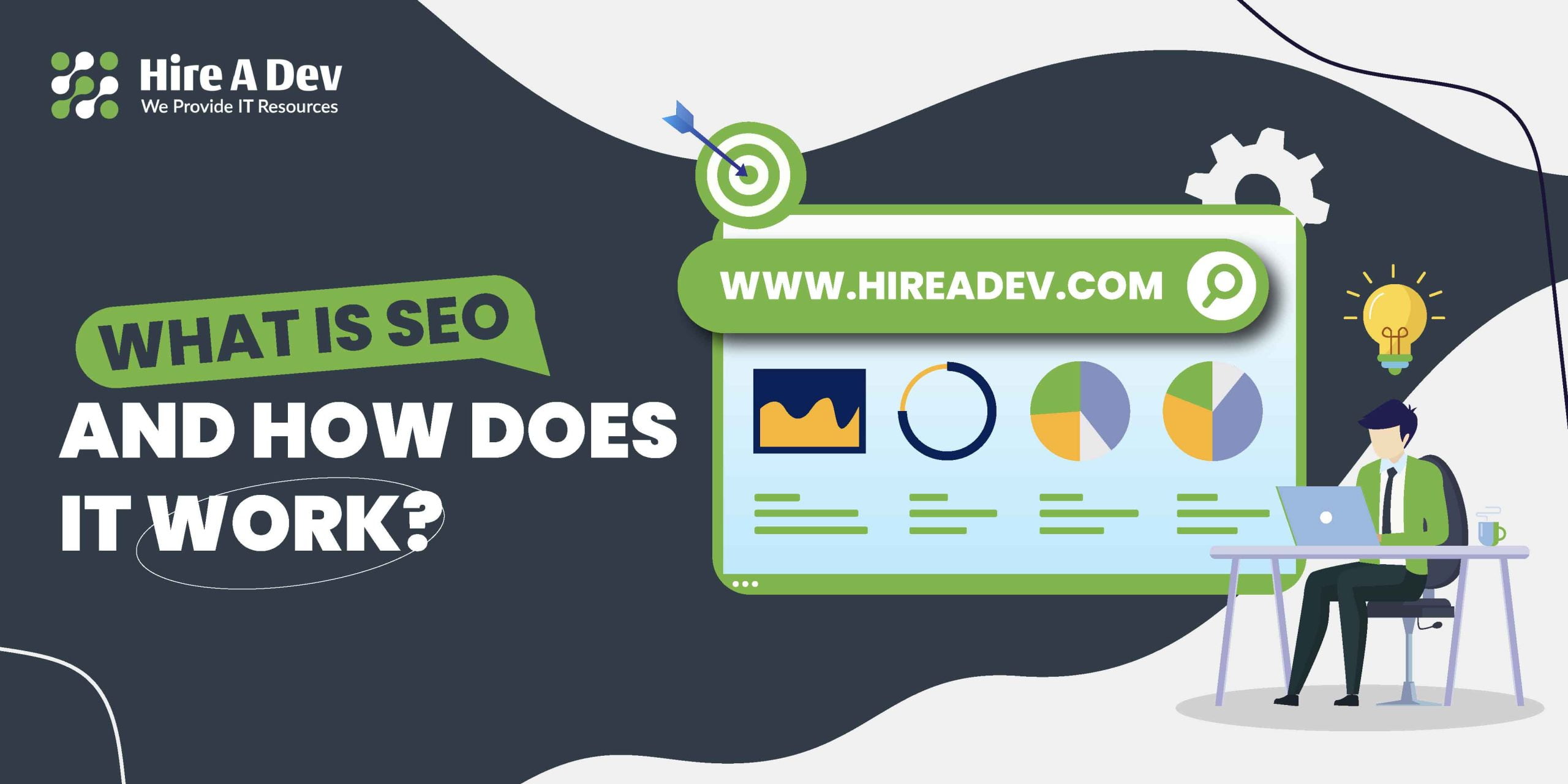Search engine optimization (SEO) has come a long way and become necessary for businesses to reach their target and potential audience. Companies must optimize their website and make it visible to their potential audience.
However, optimizing your site for SEO is about understanding what SEO is, why it is important, and how search engines work. If you want to learn more about SEO, this blog is for you.
In this blog, you will find everything you need to learn about SEO including, what it is, how it works, types of SEO marketing, and SEO best practices to improve organic search results for your website or online store.
So, let’s get into it!
How does SEO Work?
SEO works by conducting keyword research, earning inbound links, and optimizing a website’s content, to increase the website’s visibility by improving content’s ranking. SEO efforts can take months to show complete results.
Rankings
Google has a collection of algorithms such as Panda, Hummingbird, and RankBrain that are responsible for determining where to place a particular web page in the SERP.
Search engine rankings can range from the final number of search engine results for the query to the position number zero. However, this ranking can fluctuate or change due to several factors including competition in the SERP, age, or algorithm changes by the search engine.
Visibility
This term describes how easy a particular domain is to find or see in the search engine results for relevant search queries. It is responsible for delivering the main SEO objectives i.e. domain authority, and relevant traffic.
Why is it important?
SEO is the foundation of holistic online marketing. Once you understand what your business intent is, who your users are, and what they want, you can implement that knowledge across your:
- Website content
- Campaigns (paid and organic)
- Social media pages/channels
SEO is a way to drive the traffic you need to achieve key business goals including visits, conversions, and sales. A website that gets several backlinks from high authority websites gains trust and is generally regarded as trustworthy or authoritative, and then Google rewards such websites with even better rankings.
Types of SEO Marketing
On-page SEO
On-page SEO focuses on optimizing the content hosted on a website. It includes page content, title tags, Meta description, Meta tags, duplicate content checking, and more. On-page optimization strategy revolves around finding the right keywords your audience is looking for and using that for your web content.
Off-page SEO
As the name defines, Off-page optimization involves everything that is not on your website. It is an SEO strategy used to determine the authority of your content, which is achieved by getting no-follow or do-follow backlinks from other websites.
Technical SEO
Technical SEO involves changes in your website to improve its ranking and performance on Search Engine Result Pages (SERPs). Website optimization techniques ensure your site is fast, mobile-device friendly, and optimized for search engine crawlers.
SEO Strategy to Improve Organic Search Results
Keyword Research
The first step in creating an effective SEO strategy is to find out the keywords your customer is using to search for the product or service that you are offering. It will help them discover your site because every page of a website that appears in search engine rankings is associated with one or more keywords. Ideally, these keywords should have enough search volume to generate significant traffic on your site.
Competitive Analysis
Once you find the keywords you need to target, your next step is to find out your competitors who are ranking high against those keywords in search engines. Study their SEO strategy to formulate a similar strategy that will help you get the search rankings and overtake them. With relevant, high-quality, and comprehensive content, you can leverage SEO to outrank larger businesses and reach your customers first.
Backlinking
Link building is a well-acknowledged way to build the authority of your website and enhance your search engine rankings. It makes search engines assume that your content is worth visitors’ time. So, pitch your blogs and articles to news outlets or relevant websites used by your audience to get a quality backlink from them.
Image Optimization
Google and other search engines are not only concerned about the written content of your website, they also crawl your media and images. You can enhance the accessibility benefits for visitors to your web page by optimizing the images.
Start by writing helpful alt text for all the images on your site and incorporating descriptive keywords into the image file name. This will help search engines determine whether your content is valuable or relevant.
Next, make sure all the images on your website are in the optimum file format and size. Too large images will have longer load times, which affects the speed of your site and the experience of visitors to your site. Moreover, it can cause search engines and Google to penalize your search rankings.
Conclusion
In conclusion, your business can lose sales if it is not appearing at the top when your potential customer is searching for a product or service you offer. Therefore, it is critical to build a strong SEO strategy and work towards it consistently.
However, SEO is a time-consuming process and requires a lot of time, effort, and budget to buy relevant tools. So, if you want to save yourself from this hassle, Hireadev can help!
We at Hireadev, have a team of SEO professionals who can help you get ranked on Google and other search engines. So, what are you waiting for? Reach out to us for more information and get ready to serve your lost customers!








